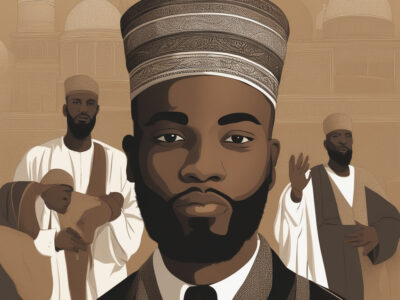Generation Black TV - Live
--- Main Blog Content Below ---
Every year in the UK, the month of October comes with the celebration of Black History – which is tagged the “Black History Month.”
It is a national celebration that focuses on promoting and celebrating the immense contributions of those with African and Caribbean heritage to British society and to improve an understanding of Black history in general.
Many years ago, the UK Black History Month was partially inspired by US Black History Month (also known as African American History Month), which is “an annual celebration of achievements by African Americans and a time for recognizing their central role in US history.” So the US Black History Month is celebrated annually every February.
Below are some of the most celebrated black artists in the UK.
1. Frank Bowling

Born in Guyana (then a British territory) in 1934, Frank Bowling moved to London in 1953 at 19 years old, where he discovered his passion for painting. After a few years, he earned a place at the Chelsea School of Art then joined the Royal College of Art, from which he graduated with the silver medal for painting in 1962.
He soon evolved from portraits to abstract art and by the mid-1960s, he was recognized by peers as an original force with a style combining figurative, symbolic and abstract elements.
Frank Bowling has since been hailed as one of the finest British artists of his generation. In 2005, he became a Royal Academician, was awarded the OBE for services to Art in 2008, and a knighthood in the Queen’s Birthday Honours in 2020.
In 2019, Tate Britain hosted his largest UK retrospective. His work is represented in fifty collections worldwide and has been exhibited in 160 group and 100 solo exhibitions. At the age of 87, he keeps painting every day in his South London studio, accompanied by his wife, Rachel, family members and friends, still exploring and pushing boundaries.
2. Lubaina Himid

Born in Zanzibar in 1954, Lubaina Himid moved to Britain in the 1960s with her parents and grew up in London. She studied theatre design then entered the Royal Art College.
From the early 1980s, she curated some of the first large exhibitions of black artists, including “Five Black Women” at the Africa Centre (1983), “Black Women Time Now” at Battersea Arts Centre (1983-4) and “The Thin Black Line” at the Institute for Contemporary Arts, London (1985-6). Since, she has never stopped supporting other black artists, including Sutapa Biswas, Claudette Johnson, Veronica Ryan, Ingrid Pollard, and Sonia Boyce.
In these past five years, her wonderful exhibitions “Navigating Charts”, “Naming The Money” and “Invisible Strategies” addressed the trauma and memory of slavery while also recreating a visibility for forgotten enslaved African people.
3. Keith Piper

Born in 1960 on the Mediterranean island of Malta, a British colony from 1814 to 1964, Keith Piper’s family is originally from Antigua, in the Caribbean. He was raised in Birmingham, and studied Fine Art in Nottingham then London.
He became a member of the Black Art Group (often written BLK Art Group, formed in 1979 in Wolverhampton) in 1982, with Eddie Chambers, Dominic Dawes, Lubaina Himid, Claudette Johnson, Wenda Leslie, Ian Palmer, Donald Rodney, and Marlene Smith.
His creative practice often acts as a response to social and political issues, historical events and geographical sites.
In 2002, Keith Piper was awarded an honorary Doctorate of Arts at Wolverhampton University and has taught for several years as a Reader in Fine Art at London’s Middlesex University. Recently, his works evolved around installation and multimedia experiences.
4. Sonia Boyce

Born in 1962 in Islington, London, in a British Afro-Caribbean family, Sonia Boyce started drawing at a young age, and joined a Foundation Course in Art & Design at East Ham College of Art and Technology in 1979, before starting a BA in Fine Art at the prestigious Stourbridge College in the West Midland.
In 1985, Lubaina Himid selected some of Boyce’s works for the exhibition “The Thin Black Line”, at the ICA. In 1987, at only 25, Boyce had her first drawing bought by Tate, “Missionary Position II”, becoming the first British black female artist to enter the collection.
Since the 1990s, her work has been largely exhibited in the UK and abroad. She will also be the first black female artist to represent Britain at the Venice Biennale in 2022.
5. Chris Ofili

He was born on 10 October 1968 in Manchester. Christopher Ofili is a British painter of Nigerian descent. He studied at Tameside College (Greater Manchester), then in London at the Chelsea School of Art and the Royal College of Art, where he also won a travelling scholarship to Zimbabwe.
At just 30 he became the first Black artist to win the prestigious Turner Prize, in 1998.
It was that same year that he dedicated his painting “No Woman No Cry” to the mother of Stephen Lawrence, who was murdered as a teenager in an unprovoked racist attack in London in 1993: she is portrayed with teardrops included photographs of Stephen.
Ofili is best known for his paintings incorporating elephant dung, which owed his work to be classified as ‘punk art’. He has also utilised resin, beads, oil paint, glitter, and cut-outs from porn magazines as painting elements.
In 2003, he represented Britain at the Venice Biennale, one of the most important international art show. Since 2005, Ofili has been living and working in Trinidad and Tobago, continuing to work in London and Brooklyn too.












